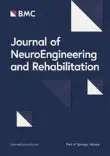
Abstract
BACKGROUND: There is scientific evidence that older adults aged 65 and over walk with increased step width variability which has been associated with risk of falling. However, there are presently no threshold levels that define the optimal reference range of step width variability. Thus, the purpose of our study was to estimate the optimal reference range for identifying older adults with normative and excessive step width variability. METHODS: We searched systematically the BMC, Cochrane Library, EBSCO, Frontiers, IEEE, PubMed, Scopus, SpringerLink, Web of Science, Wiley, and PROQUEST databases until September 2018, and included the studies that measured step width variability in both younger and older adults during walking at self-selected speed. Data were pooled in meta-analysis, and standardized mean differences (SMD) with 95% confidence intervals (CI) were calculated. A single-decision threshold method based on the Youden index, and a two-decision threshold method based on the uncertain interval method were used to identify the optimal threshold levels (PROSPERO registration: CRD42018107079). RESULTS: Ten studies were retrieved (older adults = 304; younger adults = 219). Step width variability was higher in older than in younger adults (SMD = 1.15, 95% CI = 0.60; 1.70; t = 4.72, p = 0.001). The single-decision method set the threshold level for excessive step width variability at 2.14 cm. For the two-decision method, step width variability values above the upper threshold level of 2.50 cm were considered excessive, while step width variability values below the lower threshold level of 1.97 cm were considered within the optimal reference range. CONCLUSION: Step width variability is higher in older adults than in younger adults, with step width variability values above the upper threshold level of 2.50 cm to be considered as excessive. This information could potentially impact rehabilitation technology design for devices targeting lateral stability during walking.